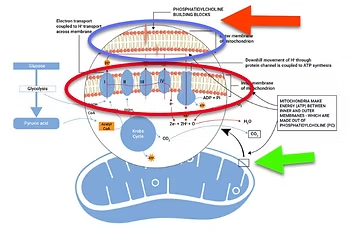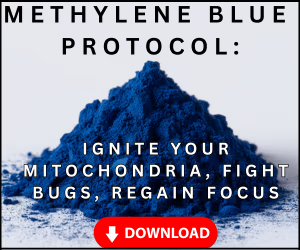Getting to Know Your Microscopic Engine Room
Step right up, folks! We’ve got a hot ticket item on the health agenda that everyone’s itching to learn about. What’s it called? Say it with me now: Mitochondrial Membrane Cell Health. Don’t scuttle away just yet, because trust me, this is something you’ll want to know about.
So, let’s dive in, and as we do, take a good look at this image. This isn’t just any old image – it’s a crucial part of our discussion. Now, keep your eyes on the green arrow. It’s pointing right towards a vibrant blue structure. That’s our star of the show – the mitochondria.
Hold onto your hats! Because each of your cells, the building blocks of your body, contains anywhere between 500 and 2000 of these little power factories. Can you believe that?
Alright, now let’s focus on the green arrow and shift our gaze upwards. That’s where you’ll notice the mitochondria sporting two unique layers: an inner and an outer one. The key detail I’m trying to get across here is this top diagram with the blue circle. That tiny, hard-to-see arrow is pointing towards a component named Phosphatidylcholine. Now you may ask, “What on earth is Phosphatidylcholine?” Well, it’s the cornerstone of your mitochondrial structure, saturating both the inner and outer layers.
Phosphatidylcholine, for all intents and purposes, acts as the insulation around your wires. If you look closely inside the mitochondria, specifically at that red circular box, you’ll see numbers: one, two, three, and four. These represent the spots where electrons, the sparks of life, are ferried back and forth.
The Skinny on the Mitochondrial Layers
The Importance of Mitochondrial Health and Phosphatidylcholine
Think of it this way: If you’ve got a wonky wire in your house, it’s bound to short circuit, right? Similarly, if your mitochondria or their phospholipid membranes aren’t up to snuff, you’re going to end up with a mitochondrial short circuit. Nobody wants that, trust me! That’s why, as I’ve mentioned in my previous video, I highly recommend keeping your mitochondrial membrane health in prime shape. A healthy mitochondrial membrane means good ATP production and, consequently, a better life.
So there you have it, folks! A crash course in the importance of your mitochondria and the role of phosphatidylcholine. Keep your cell membranes healthy, and you’ll experience a significant boost in vitality and overall well-being. Did you enjoy our little journey into cellular health? If so, don’t be shy to drop a like, leave a comment, and share this knowledge with your loved ones. Good health is best enjoyed together, after all.
Frequently Asked Questions (FAQ)
Mitochondria are the “power factories” of your cells, producing ATP, the body’s main source of energy. Each cell can contain 500 to 2000 mitochondria, depending on its energy needs.
Phosphatidylcholine is a key component of mitochondrial membranes. It acts like insulation around wires, protecting the mitochondria and ensuring proper energy transfer for ATP production.
Healthy mitochondrial membranes allow for efficient electron transfer and ATP production. Damaged or weak membranes can cause “short circuits” in energy production, leading to fatigue and reduced vitality.








